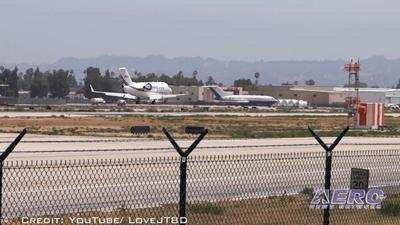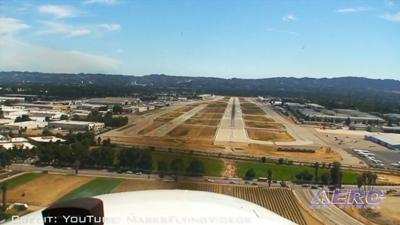Thu, Jun 30, 2022
… Or Forever Hold Your N1
Van Nuys Airport (VNY)—America’s busiest general aviation airport—announced the recipients of its 2021 Friendly Flyer Awards. The awards honor general aviation companies and corporate flight departments for their efforts to reduce the noise of their aircraft operations.

Eighteen aircraft operators received recognition plaques for complying with the airport’s mandatory noise abatement policies. Compliance, in this instance connotes at least 99-percent adherence to all noise-abatement programs and reduced nighttime jet arrivals and departures under the somewhat unimaginatively named Quieter Nights Program.
Over the past four decades, VNY has implemented a wide and aggressive gauntlet of noise abatement programs and policies. Mandatory efforts began with the establishment of a partial nighttime departure curfew in 1981, followed by a rule prohibiting the addition of Stage-II aircraft in 2002, and a noisier jet phase-out in 2009. These regulations, along with voluntary measures – such as the No Early Turn Helicopter Route and Altitude Deviation, Quiet Jet Departure and Quieter Nights Programs – depend on the ongoing compliance of both VNY-based and transient pilots.
Notwithstanding award programs, environmental theater, and institutional self-aggrandizement, overly-aggressive airport noise-abatement procedures present hazards to both aircraft and the communities over which they depart and arrive.

The business of drastically reducing engine-power shortly after takeoff—as many noise-abatement procedures prescribe—is a dangerous one. Contradictory arguments predicated upon the notion that V1 is all the departure speed an aircraft requires are sophistic, and speak to a worrying misunderstanding of rudimentary aerodynamic principles.
Noise-abatement procedures that combine partial-power climbs and low-altitude, post-departure turns are particularly hazardous—especially to aircraft departing into IMC. What’s more, noise-abatement regulations—because they are enforceable by FAA action against both pilot and air-carrier certificates—are apt to shift a pilot’s focus from keeping his aircraft safe to keeping it quiet.
More News
Airport Marking Aids Markings used on runway and taxiway surfaces to identify a specific runway, a runway threshold, a centerline, a hold line, etc. A runway should be marked in ac>[...]
"It is extremely difficult, if not impossible, for manned aircraft to see a drone while conducting crop-enhancing and other aerial applications at low altitudes and high speeds. We>[...]
Aero Linx: The Skyhawk Association The Skyhawk Association is a non-profit organization founded by former Skyhawk Pilots which is open to anyone with an affinity for the A-4 Skyhaw>[...]
“The T-54A benefits from an active Beechcraft King Air assembly line in Wichita, Kansas, where all required METS avionics and interior modifications are installed on the line>[...]
Aero Linx: Aerostar Owners Association The Association offers the Aerostar Owner a unique opportunity to tap an invaluable source of information concerning the care and feeding of >[...]
 ANN's Daily Aero-Term (04.28.24): Airport Marking Aids
ANN's Daily Aero-Term (04.28.24): Airport Marking Aids Aero-News: Quote of the Day (04.28.24)
Aero-News: Quote of the Day (04.28.24) ANN's Daily Aero-Linx (04.28.24)
ANN's Daily Aero-Linx (04.28.24) Aero-News: Quote of the Day (04.29.24)
Aero-News: Quote of the Day (04.29.24) ANN's Daily Aero-Linx (04.29.24)
ANN's Daily Aero-Linx (04.29.24)




